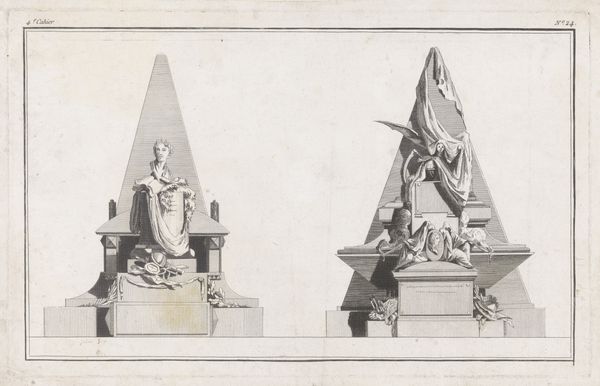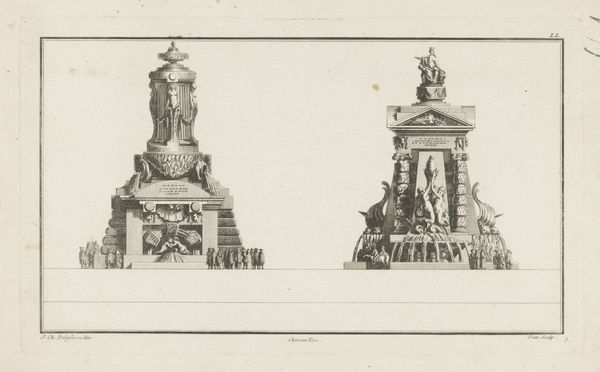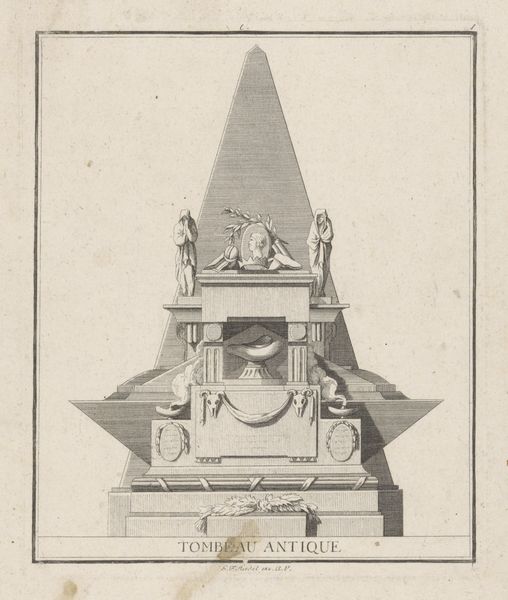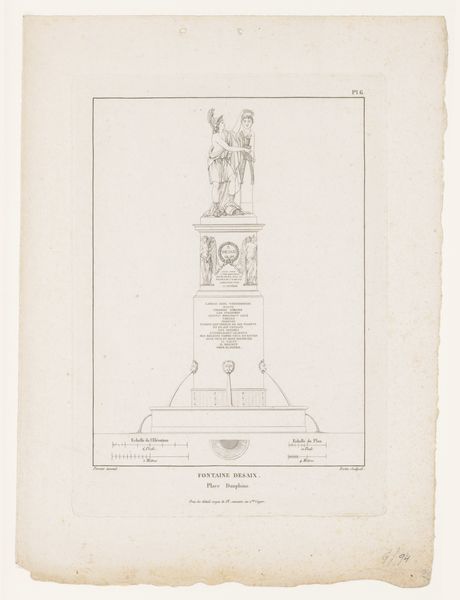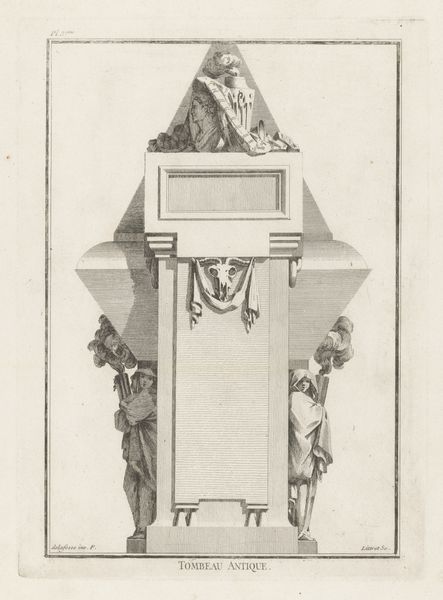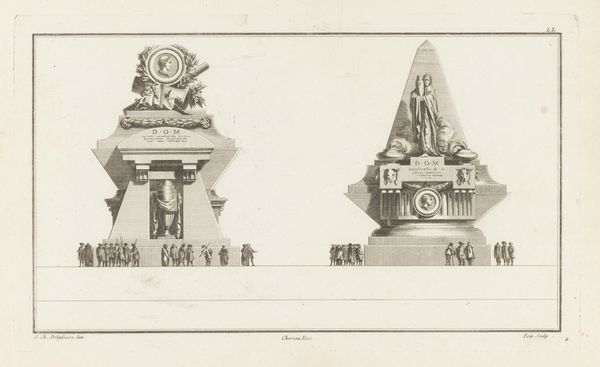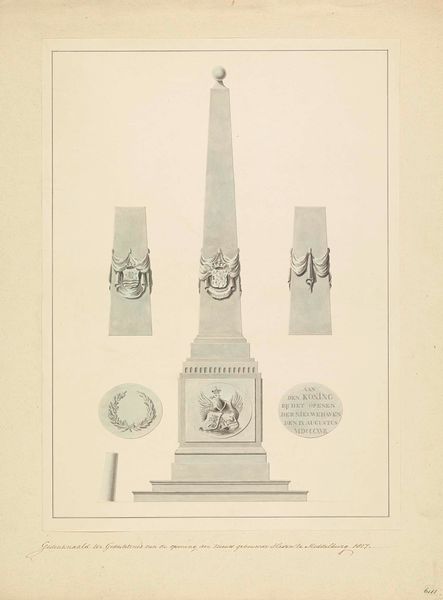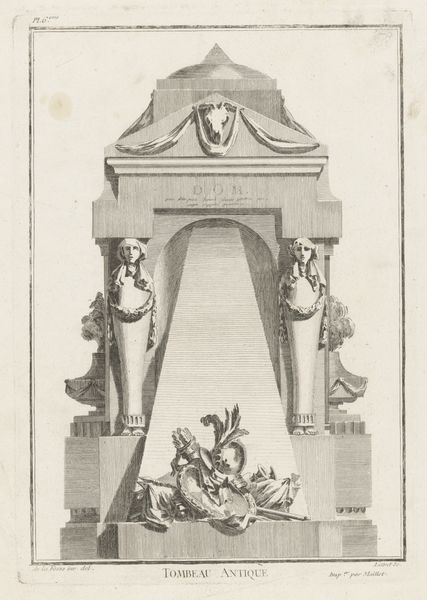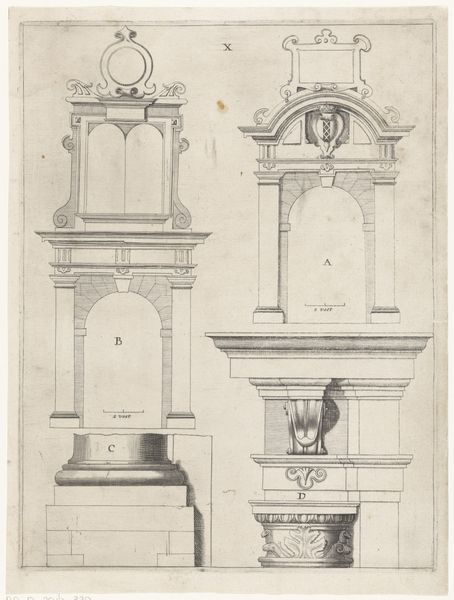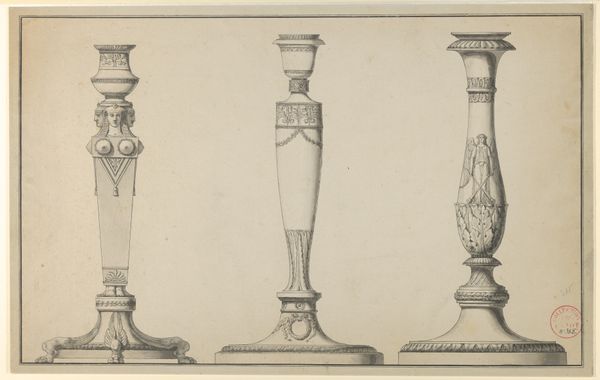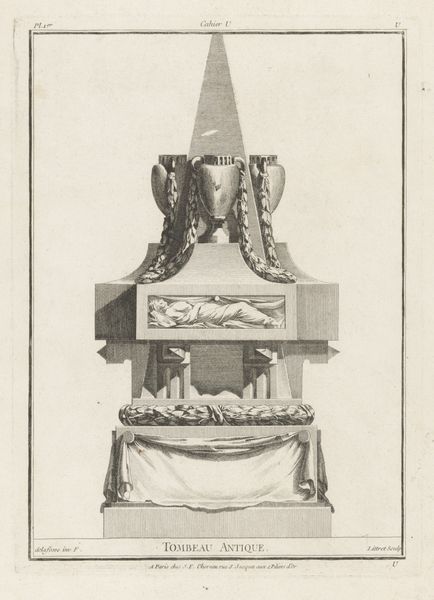
print, engraving
#
portrait
#
neoclacissism
# print
#
form
#
history-painting
#
engraving
Dimensions: height 241 mm, width 385 mm
Copyright: Rijks Museum: Open Domain
Jacques Juillet created this print, “Two Tombs with Medallions”, sometime in the 1700s. The image shows a symmetrical pair of obelisk-shaped memorials. These are elaborately ornamented with classical motifs, like skulls, drapery, and portraits in medallions. This design reflects the period’s interest in Neoclassicism, with its emphasis on symmetry, idealized forms, and references to ancient Greece and Rome. France, where Juillet worked, was then a society of strict hierarchy, with an established church and monarchy, and an aristocracy that was starting to crumble. Styles like this, then, were part of a classical revival that served as a reminder of the values of empire. At the same time, the decorative focus suggests a growing shift toward more secular social values, in which great worth was assigned to aesthetic pleasure. As historians, we can dig into archives of pattern books and interior designs to learn more about the period and what these images might have been used for. The meaning of art is not inherent in the object, but contingent on the social and institutional context in which it’s made and received.
Comments
No comments
Be the first to comment and join the conversation on the ultimate creative platform.

